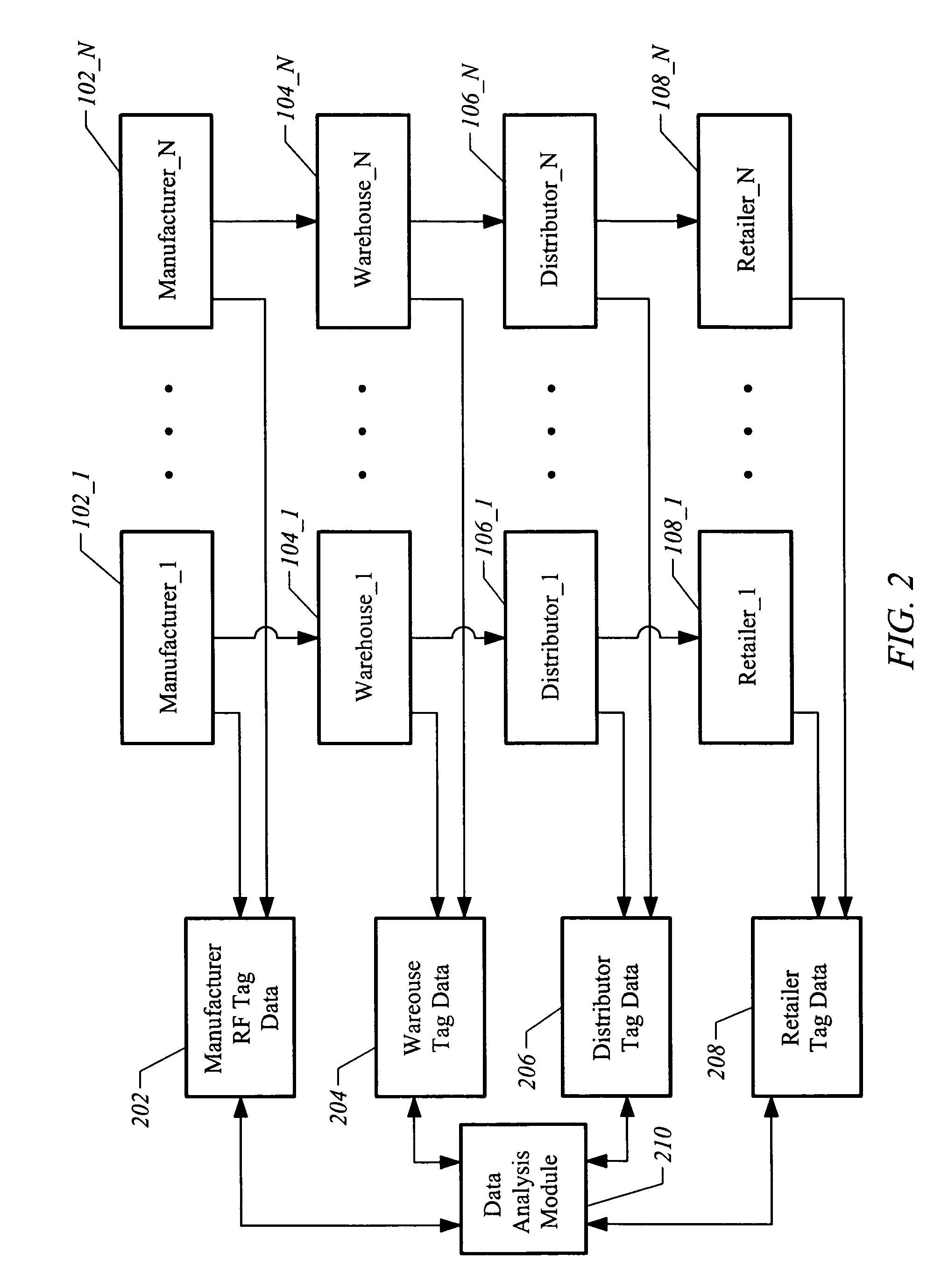Apparatus and method for authenticating products
a technology of authenticating products and products, applied in the field of supply chain, can solve the problems of increasing scrutiny of supply chain abuses, affecting the identification of counterfeit goods by enterprises downstream from counterfeit insertion events, and avoiding supply chain abuses and many other supply chain abuses
- Summary
- Abstract
- Description
- Claims
- Application Information
AI Technical Summary
Benefits of technology
Problems solved by technology
Method used
Image
Examples
Embodiment Construction
[0034]FIG. 2 illustrates a supply chain 200 utilizing RF tag information. Manufacturers 102_1 through 102_N produce RF tag information upon manufacturing products. For example, a manufacturer produces a product, places a tag on the product, and then uses an RF scanner to record a product number and attributes associated with the product (e.g., date manufactured, location manufactured, type of product, and the like). This RF tag information is routed to a repository to form manufacturer RF tag data 202.
[0035] When the manufactured products are moved to warehouses, RF tag data are accumulated. In particular, warehouses 104_1 through 104_N generate warehouse tag data 204. In a similar manner, when the same products are moved to distributors, more RF tag data are accumulated for the products. In particular, distributors 106_1 through 106_N generate distributor tag data 206. Finally, when the products are moved to the retail level, more RF tag data are accumulated. FIG. 2 illustrates th...
PUM
 Login to View More
Login to View More Abstract
Description
Claims
Application Information
 Login to View More
Login to View More - R&D
- Intellectual Property
- Life Sciences
- Materials
- Tech Scout
- Unparalleled Data Quality
- Higher Quality Content
- 60% Fewer Hallucinations
Browse by: Latest US Patents, China's latest patents, Technical Efficacy Thesaurus, Application Domain, Technology Topic, Popular Technical Reports.
© 2025 PatSnap. All rights reserved.Legal|Privacy policy|Modern Slavery Act Transparency Statement|Sitemap|About US| Contact US: help@patsnap.com



